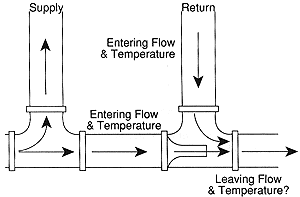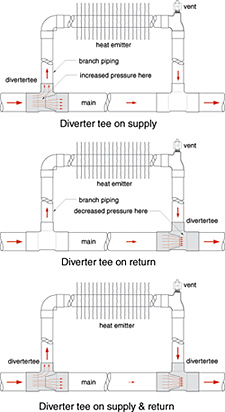I have a two story house. Radiators on top floor work fine. Radiators on 1st floor all work except for two which are #s 2 and 3 on the supply from the boiler.
I have ruled out a blockage, as I'm able to get water flow at the bleed valves. Interestingly, the main supply and return lines are 1", but the branch supply / return to these radiators are reduced to 1/2 copper lines (1-1/2 Ts are used).
I'm at a lost as to why these radiators are not getting hot water, unless bled. Incidentally, ALL of the radiators have 1/2" pipes.
Any thoughts?
I have ruled out a blockage, as I'm able to get water flow at the bleed valves. Interestingly, the main supply and return lines are 1", but the branch supply / return to these radiators are reduced to 1/2 copper lines (1-1/2 Ts are used).
I'm at a lost as to why these radiators are not getting hot water, unless bled. Incidentally, ALL of the radiators have 1/2" pipes.
Any thoughts?


